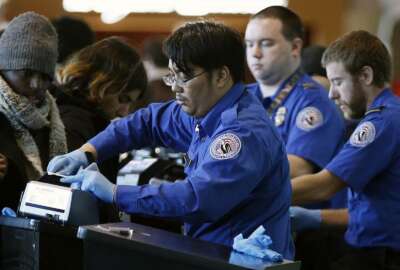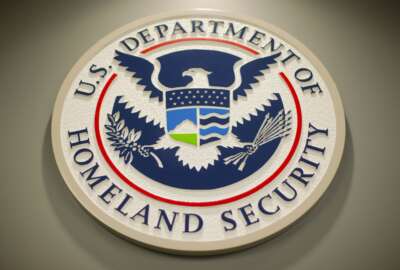
TSA to release ‘innovation doctrine’ for embracing new technologies and ideas
TSA Administrator David Pekoske thinks common data standards will help his agency more quickly adopt new security screening tech.
The Transportation Security Administration will soon publish an “innovation doctrine” to help guide technology projects, as the agency continues to push toward “open architecture” airport security systems that can more easily integrate new hardware and software.
TSA Administrator David Pekoske said the innovation doctrine will be published within the “next couple of weeks” during an Oct. 4 address at the Identity Week America conference in Washington.
“It basically says, ‘This is how we approach innovation, this is how we’re embedding it in the core business process of the agency,’” he said.
TSA has an innovation task force that hosts technology demonstrations where vendors can test their products at airports across the United States.
The agency also has a chief innovation officer, Dan McCoy, who has been with TSA since May 2020.
“[McCoy’s] job is to make sure we create the environment for innovation to thrive and really be able to get innovative ideas from passengers, to get innovative ideas from our officers who are doing the mission every single day, both from a technology and from a process perspective,” Pekoske said.
TSA is highlighted as part of the Biden administration’s “customer experience” agenda, aimed at improving how the public interfaces with federal services.
The agency is already testing out Mobile Drivers Licenses at airports in Maryland and Arizona, where travelers can download a digital version of their driver’s license to their Apple wallets for use during security screening.
TSA ultimately wants to introduce what officials call a “touchless curb-to-gate” experience.
Pekoske said the agency continues to drive toward “open architecture” for its computers and other screening systems, so different technologies can more easily share screening images and other data. He compared it to how different applications can be downloaded onto Apple or Android operating systems.
“What we want to do with our transportation security equipment is specify, on-purchase, what the data standards need to be for that equipment,” Pekoske said. “So essentially, we want to buy the machine and we want to buy the operating system for the machine.”
TSA began efforts to adopt standard data and image formats for its Advanced Imaging Technology and Computed Topography systems in 2020. In July, the agency announced it had reached an agreement in principle with the European branch of Airports Council International, the European Organization for Security and other airport and industry groups to implement open architecture screening systems throughout Europe.
TSA is coalescing around a standard called the Digital Imaging and Communications in Security or “DICOS,” developed by the National Electrical Manufacturers Association.
“We’re going to specify the open platform software library as the [Application Programming] interface to other applications that the technology will interface with,” Pekoske said. “We think that this will ensure that we’re future-proof to a large degree and . . . when we see a threat develop that we can rapidly put a technology solution in place using software upgrades to existing technology.”
He suggested open standards will increase competition for the software used in TSA systems, in addition to speeding up the acquisition process. In March 2021, the Government Accountability Office reported on the challenges TSA faces to diversifying the security marketplace.
“In my ideal world, if we have a new threat that presents itself and I need to be able to detect that threat in our X-ray technology, and we have an open architecture system in place, we issue a request for proposals to any vendor, including the original equipment manufacturer, and allow those vendors to come back and give us a solution within 60 or 90 days,” Pekoske said. “This will truncate the timeline significantly.”
Copyright © 2025 Federal News Network. All rights reserved. This website is not intended for users located within the European Economic Area.
Follow @jdoubledayWFED
Related Stories





